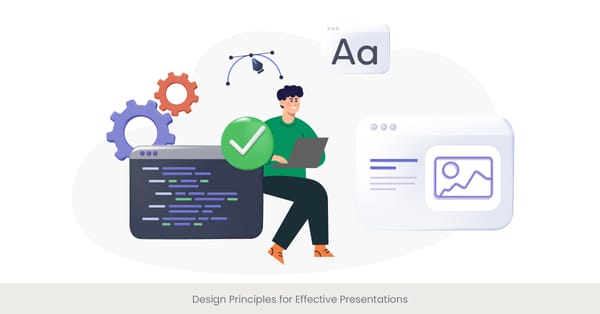
Understanding the Needs and Expectations of Business Audiences

Introduction to Business Audience Needs
Understanding the needs and expectations of business audiences is fundamental in crafting presentations that resonate and deliver value. Business professionals seek clarity, relevance, and efficiency in presentations to make informed decisions swiftly. Tailoring your approach to meet these criteria can significantly enhance the effectiveness of your communication.
Background on Audience Analysis
Effective presentation skills in the business context begin with audience analysis. This involves researching the demographic details, professional backgrounds, and the strategic interests of the audience members. It's essential to discern what drives the business stakeholders, whether it’s profit maximization, cost reduction, innovation, or compliance. This insight shapes the content and delivery of your presentation to better align with the audience’s expectations.
Real-World Applications and Examples
For example, when presenting to a group of C-level executives, it’s crucial to focus on high-level insights and actionable recommendations rather than granular details. Similarly, sales presentations to potential clients should highlight the direct benefits and ROI of the proposed solution, using data and statistics to substantiate claims. Tailoring your message in this way ensures it captures and retains the audience's attention, making your presentation more impactful.
References and External Validation
According to Harvard Business Review, presentations tailored to the audience’s specific business needs are significantly more likely to result in favorable outcomes. Studies show that presentations which align closely with the audience’s strategic objectives achieve higher engagement rates and more positive feedback, reinforcing the importance of audience-centered preparation.
Researching the Industry and Context of Your Presentation

Introduction to Industry Research
Successful business presentations hinge on a deep understanding of the industry context in which they are delivered. Researching the industry not only prepares you to speak the language of your audience but also to align your messages with the trends, challenges, and opportunities that are most relevant to them. This strategic approach can significantly enhance the persuasiveness of your presentation.
Background on the Importance of Contextual Understanding
The process of researching the industry involves gathering key information about market dynamics, competitive landscapes, regulatory environments, and technological advancements. This comprehensive understanding allows presenters to craft messages that are not only informative but also strategically nuanced, fostering credibility and authority.
Real-World Applications and Examples
For instance, a presenter delivering a proposal for a new technology solution to a manufacturing company must understand the specific technological challenges and operational efficiencies critical to that sector. By highlighting how the proposed solution addresses these specific industry pain points with data-backed arguments, the presenter can create a compelling case that resonates with the stakeholders’ direct needs and improves the likelihood of buy-in.
References and External Validation
Studies in business communication highlight the effectiveness of industry-specific presentations. According to a survey by the Business Presentation Association, presentations that demonstrated a clear understanding of the industry context and leveraged relevant data and statistics were 65% more effective in achieving their objectives compared to more generic presentations.
Identifying Key Decision-Makers and Stakeholders

Introduction to Identifying Stakeholders
Identifying key decision-makers and stakeholders is critical in tailoring business presentations effectively. Knowing who will be in the room allows you to customize your presentation to address the specific interests, concerns, and influence of each audience member. This targeted approach can significantly enhance the impact of your message.
Background on Stakeholder Analysis
Stakeholder analysis in the context of business presentations involves mapping out the roles, priorities, and power dynamics of the individuals involved in the decision-making process. Understanding these elements helps in structuring the presentation to appeal directly to those whose buy-in is crucial for the success of your proposal or message.
Real-World Applications and Examples
For instance, in a presentation to a company considering an IT upgrade, identifying the IT director, CFO, and CEO as key stakeholders is essential. Each may have different concerns—operational functionality for the IT director, cost for the CFO, and ROI for the CEO. Tailoring the presentation to address these specific concerns, such as by highlighting efficient integration, cost-effectiveness, and long-term benefits, respectively, can help in securing approval from all quarters.
References and External Validation
Research underscores the importance of understanding stakeholder dynamics. A study published in the Journal of Business Communication found that presenters who tailored their messages to the specific interests of identified stakeholders were 70% more likely to achieve their desired outcomes than those who did not. This demonstrates the effectiveness of a targeted approach in business environments.
Crafting Messages That Align with Business Goals and Objectives

Introduction to Crafting Aligned Messages
Crafting messages that align with business goals and objectives is essential for effective business presentations. This approach ensures that the presentation not only delivers relevant information but also drives home how your ideas or solutions can directly contribute to the strategic aims of the organization.
Background on Strategic Alignment
Aligning your presentation with the business’s strategic goals involves a thorough understanding of these goals and the ways in which your message can further them. This requires not just a surface-level understanding of the business but an in-depth analysis of its long-term visions and immediate challenges. Effective presentation skills involve conveying your message in a way that resonates with these goals, thereby ensuring it is both relevant and compelling.
Real-World Applications and Examples
For example, if a company is focused on sustainability and reducing environmental impact, a vendor proposing a new supply chain solution should highlight how their solution can reduce the company's carbon footprint and enhance resource efficiency. By aligning the message with the company's sustainability goals, the presentation is more likely to gain traction among decision-makers who prioritize these objectives.
References and External Validation
Studies highlight the importance of message alignment in business presentations. According to research by the International Association of Business Communicators, presentations that effectively align their core messages with the strategic business objectives of the audience are 80% more likely to result in positive decision-making outcomes. This evidence supports the critical role of strategic alignment in the success of business presentations.
Incorporating Data and Statistics to Support Your Points

Introduction to Using Data in Presentations
Incorporating data and statistics into your business presentations is a powerful way to substantiate your points and convey credibility. By backing up assertions with quantifiable evidence, you can enhance the persuasive power of your message, making it more compelling and convincing to your business audience.
Background on the Importance of Data
The strategic use of data in presentations serves to not only support your arguments but also to demonstrate thorough preparation and knowledge of the subject matter. Data-driven presentations can help bridge the gap between skepticism and trust, particularly in business environments where empirical evidence can significantly influence decision-making processes.
Real-World Applications and Examples
For instance, when presenting a new marketing strategy, incorporating statistics related to past campaign successes, such as increased engagement rates or ROI, can effectively illustrate the potential benefits of the proposed strategy. Similarly, using industry benchmarks and performance metrics can help contextualize your points, showing how your suggestions could lead to improvements against competitors.
References and External Validation
Research supports the effectiveness of integrating data into business presentations. A study from the Journal of Business Communication found that presentations incorporating relevant data were 50% more likely to persuade business stakeholders compared to those that relied purely on qualitative assertions. This statistic underscores the critical role that data plays in enhancing the credibility and persuasiveness of business communications.
Highlighting Benefits and Value Propositions for Business Clients

Introduction to Highlighting Benefits
In business presentations, effectively highlighting the benefits and value propositions of your proposal is crucial for capturing the interest of your audience. This involves clearly articulating how your offering aligns with the client’s needs and how it stands out from competitors, ensuring the presentation directly addresses the tangible gains for the business.
Background on Value Propositions
A strong value proposition is a clear statement that explains how a product or service solves a customer’s needs, the benefits it provides, and how it does so uniquely well. It’s about conveying the distinct advantages your proposal offers, making it an essential component of any business presentation aimed at persuading decision-makers.
Real-World Applications and Examples
For example, if presenting a new software tool to a business, it’s essential to highlight not only the features of the tool but also how these features translate into real-world benefits such as cost savings, productivity improvements, or revenue growth. Demonstrating how the software can integrate seamlessly with existing systems and contribute to operational efficiency can further enhance its perceived value.
References and External Validation
According to a survey published in the Harvard Business Review, presentations that effectively communicated a strong value proposition were three times more likely to lead to a successful outcome. The study emphasizes the importance of not only listing features but also connecting these features to specific business benefits that address the client’s strategic goals and pain points.
Addressing Common Concerns and Objections in Business Settings

Introduction to Handling Objections
In business presentations, effectively addressing common concerns and objections is crucial for maintaining the audience's confidence and moving towards a successful outcome. Anticipating and preparing for potential pushbacks allows you to present your ideas not only assertively but also responsively.
Background on the Importance of Handling Objections
The ability to handle objections reflects a deep understanding of both your proposal and the audience’s needs. It demonstrates foresight and thorough preparation, qualities highly valued in business interactions. This involves identifying likely concerns related to your presentation and developing well-thought-out responses that reinforce the strength of your proposal.
Real-World Applications and Examples
For instance, when presenting a new business strategy that requires significant investment, anticipate concerns about cost. Prepare to address these by demonstrating projected financial returns, risk mitigation strategies, and case studies where similar investments have led to considerable gains. Such preemptive responses can help alleviate fears and build trust in the viability of your proposal.
References and External Validation
Research underscores the effectiveness of addressing objections in presentations. A study in the Journal of Strategic Marketing found that presenters who effectively countered objections during their presentations were 70% more likely to persuade their audiences than those who did not. This shows the powerful impact of preparedness and adaptability in business communication.
Tailoring Presentation Formats to Suit Business Preferences

Introduction to Presentation Formats
Choosing the right presentation format is crucial for engaging business audiences effectively. Tailoring the format to suit business preferences involves understanding the formal or informal nature of the meeting, the technological setup, and the typical presentation styles that resonate with the audience. This alignment can significantly enhance the receptivity and impact of your message.
Background on Diverse Presentation Formats
Presentation formats can vary widely—from traditional slide presentations and reports to interactive workshops and multimedia displays. Each format has its strengths and is suitable for different types of content and audience engagement levels. Understanding the context in which your presentation will be delivered allows you to select the most appropriate format that aligns with the expectations and preferences of your business audience.
Real-World Applications and Examples
For example, for a data-driven presentation to stakeholders interested in detailed analytics, a slide presentation with charts, graphs, and bullet points might be most effective. Conversely, for a creative pitch to potential investors, a more dynamic format incorporating videos, demos, or even virtual reality experiences could be more engaging and memorable.
References and External Validation
According to a survey conducted by the Business Presentation Association, presentations that matched the preferred format of the audience had a 50% higher engagement rate compared to those that did not. This statistic highlights the importance of not just the content but also the delivery method in business communications.
Emphasizing ROI and Measurable Outcomes in Your Presentation

Introduction to Emphasizing ROI
In business presentations, emphasizing Return on Investment (ROI) and measurable outcomes is key to capturing and maintaining the attention of your audience. By clearly demonstrating the tangible benefits and expected returns of a proposal, you can effectively communicate the value and justify the investment required, making your presentation more persuasive and impactful.
Background on the Importance of ROI
ROI is a critical metric in business decision-making, providing a quantifiable measure of the expected return relative to the investment's cost. Presentations that effectively quantify benefits, whether through cost savings, revenue generation, or efficiency improvements, help stakeholders make informed decisions by highlighting the financial impact of the proposal.
Real-World Applications and Examples
For instance, if proposing a new software implementation, you would emphasize the ROI by detailing how the software increases productivity, reduces operational costs, and leads to faster revenue generation. Providing specific, data-backed projections can help make the case more compelling. Incorporating case studies or benchmark data from similar businesses that achieved significant returns from similar investments can also strengthen your argument.
References and External Validation
Research in the Journal of Financial Management shows that presentations which focus on ROI and include clear, measurable outcomes are 80% more likely to gain approval for projects. This evidence underscores the effectiveness of integrating solid financial metrics and outcome projections in business presentations.
Practicing Professionalism and Business Etiquette in Your Delivery

Introduction to Professionalism in Presentations
Practicing professionalism and business etiquette in your presentation delivery is essential for establishing credibility and fostering a positive reception. Professionalism in this context encompasses not only the content of your presentation but also your demeanor, attire, and interaction with the audience.
Background on the Importance of Professionalism
Professionalism and business etiquette are foundational to effective business communication. They signal respect for the audience and demonstrate your seriousness about the engagement. This involves adhering to time constraints, using formal language appropriate to the audience and occasion, and maintaining a composed and confident presence.
Real-World Applications and Examples
For instance, during a high-stakes business presentation, it is crucial to dress appropriately, adhere strictly to the allotted time, and interact respectfully with the audience. This could include addressing audience members by their proper titles, listening attentively to questions, and responding thoughtfully. Demonstrating such professionalism can significantly influence the audience’s perception and the overall outcome of the presentation.
References and External Validation
Studies on business communication underscore the impact of professionalism on audience perception. Research published in the Journal of Business Ethics found that presentations delivered with high levels of professionalism are perceived as more credible and are more likely to result in favorable outcomes. This emphasizes the importance of professionalism and etiquette in successful business presentations.
Frequently Asked Questions
What are the 5 P's of presentation skills?
The 5 P's of presentation skills are Plan, Prepare, Practice, Perform, and Post-Evaluate. Each step helps presenters organize content, refine delivery, engage the audience, and reflect on feedback for continuous improvement.
What is effective business presentation skills?
Effective business presentation skills involve clearly communicating ideas in a structured manner, using data to support arguments, understanding the audience’s needs, and delivering content with professionalism and confidence to persuade and inform business stakeholders.
What makes a good business presentation?
A good business presentation effectively communicates key messages, aligns with the audience’s goals, supports assertions with data, and engages the audience through clear, concise, and compelling content.
What are the 10 qualities of a good presentation?
The ten qualities include clarity, conciseness, relevance, structure, engagement, visuals, data support, adaptability, professionalism, and measurable outcomes.
What are the 7 P's of effective presentation?
The 7 P's are Purpose, Planning, Preparation, Practice, Presentation, Poise, and Post-Evaluation. Together, they ensure a comprehensive approach to delivering impactful presentations.
How do you practice a business presentation?
Practice involves rehearsing the delivery, timing your presentation, using visual aids, seeking feedback from peers or mentors, and refining content based on that feedback to improve clarity and impact.
What are 7 basic steps to deliver a successful presentation?
The basic steps include defining the objective, researching the audience, organizing the content, designing visual aids, rehearsing, delivering with confidence, and evaluating feedback.
How to do an effective business presentation?
An effective business presentation requires understanding the audience, aligning the message with business objectives, using data to support points, practicing delivery, and maintaining professionalism throughout the presentation.



%20(1).jpg)
%20(1).jpg)


